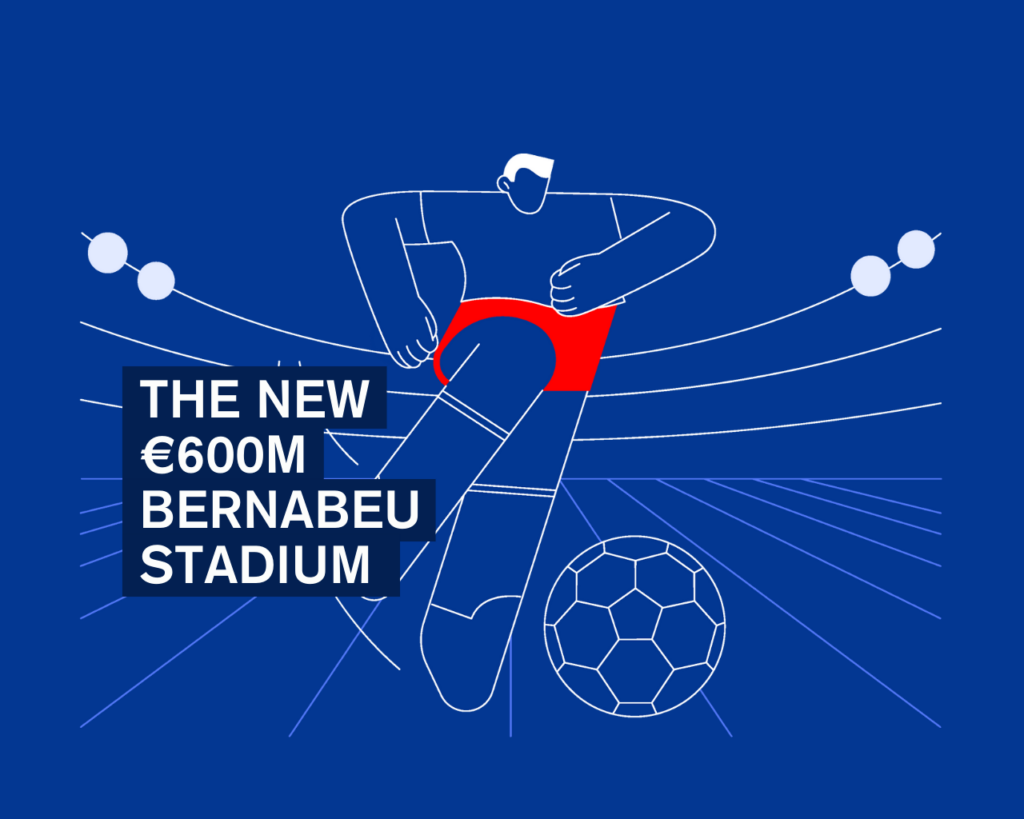Bernabeu Stadium: A Sport Lover’s Paradise
The History of the Santiago Bernabeu Stadium
Nestled in the heart of Madrid, the Santiago Bernabeu Stadium isn’t just a venue; it’s a hallowed ground steeped in footballing history. Named after the legendary former president of Real Madrid, Santiago Bernabeu, this stadium has been witnessed to countless historic moments since its opening in 1947.
Its stands have echoed with the roars of football enthusiasts as they celebrated the triumphs of Real Madrid’s greatest teams. The Bernabeu has been a theatre for legendary matches, where the likes of Alfredo Di Stefano, Zinedine Zidane, Cristiano Ronaldo, and many other icons left an indelible mark.
The stadium’s aura isn’t just about the matches; it’s about the legacy it holds. From hosting European Cup finals to witnessing numerous league triumphs, the Bernabeu has been a home to the dreams and aspirations of millions of fans worldwide.
Real Madrid and the Bernabeu Stadium
Real Madrid’s bond with the Santiago Bernabeu Stadium is nothing short of sacred. For decades, this venue has been the fortress where dreams were born, and greatness was forged. The club’s success at the Bernabeu is part of its identity and legacy.
Countless titles, both domestic and international, have been clinched on this hallowed turf. From stunning comebacks to jaw-dropping displays of skill, the stadium has been witness to Real Madrid’s finest moments.
The passionate fanbase, known as the Madridistas, has turned the Bernabeu into a cauldron of unwavering support, inspiring the players to achieve the extraordinary. The stadium stands as a testament to the club’s rich heritage and the unwavering bond between the team and its fans.
The Renovation of the Bernabeu Stadium
In its pursuit of excellence, Real Madrid embarked on an ambitious journey to revamp the Bernabeu, transforming it into a state-of-the-art marvel. The renovation, costing around €600 million, was aimed at preserving the stadium’s historic essence while embracing modernity and innovation.
The project involved a meticulous overhaul, incorporating cutting-edge technology, enhanced facilities, and sustainable features. Among the prominent changes were the addition of a retractable roof, an immersive 360-degree video screen, improved hospitality areas, and revamped seating for an unparalleled spectator experience.
Furthermore, the renovation prioritized eco-friendly initiatives, such as incorporating renewable energy sources and optimizing sustainability measures to reduce the stadium’s environmental impact.
The latest renovation process was initially set to begin in Summer 2017 but actually didn’t begin until 2019. Work was supposed to last 3 years however the COVID-19 pandemic plus the Russian invasion of Ukraine all caused disruption to various supply chains and therefore the Stadium’s latest inauguration was postponed until 2023.
The 2019 renovation was complex as the aim was to be able to undertake the process without causing disruption to the ongoing football seasons. However Real Madrid did need to play their matches at another Stadium (Alfredo Di Stefano) until the end of the 20-21 season.
A New Chapter for the Santiago Bernabeu Stadium
The renovated stadium is more than just a structure; it’s a symbol of passion, glory, and the enduring spirit of football. It remains a shrine where dreams will continue to flourish, and the echoes of triumph will reverberate for years to come.
The Santiago Bernabeu Stadium boasts impressive statistics and features that contribute to its iconic status:
Capacity: The stadium’s seating capacity has varied over the years due to renovations and safety regulations. At its peak before the recent renovation, the Bernabeu could accommodate approximately 81,044 spectators for football matches. It’s current seating capacity post renovation is around 85,000.
Location: Situated in the heart of Madrid, Spain, the stadium stands tall in the Chamartin district, offering a central and easily accessible location for fans and visitors.
Architecture: The Bernabeu has undergone multiple renovations and upgrades since its inauguration in 1947. Its architecture reflects a blend of traditional elements with modern enhancements, including the iconic white exterior and unique design features.
Facilities: The stadium comprised four main stands: the North Stand (Fondo Norte), the South Stand (Fondo Sur), the East Stand (Tribuna Este), and the West Stand (Tribuna Oeste). It also included VIP seating, corporate boxes, press areas, restaurants, and museum spaces. The most innovate update to the stadium is a new state-of-the-art retractable pitch that maintains the grass pitch for when non-football events are held.
Historic Significance: Throughout its existence, the Santiago Bernabeu has hosted numerous significant football matches, including UEFA Champions League finals, domestic league matches, international friendlies, and other high-profile events. It has also been a stage for iconic players and legendary moments in football history.
Iconic Status: Beyond its statistics, the Santiago Bernabeu Stadium holds a special place in the hearts of football fans worldwide. It’s revered as a temple of football where the legacy of Real Madrid has been etched into history.














